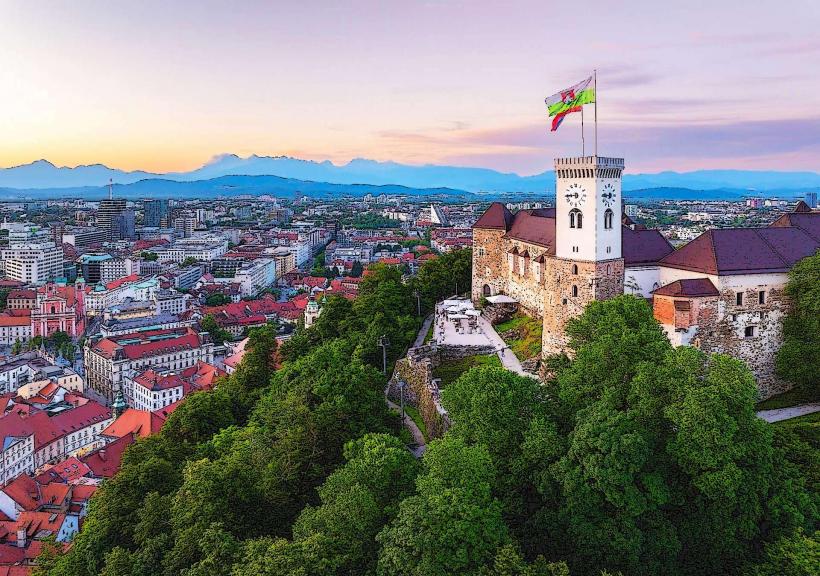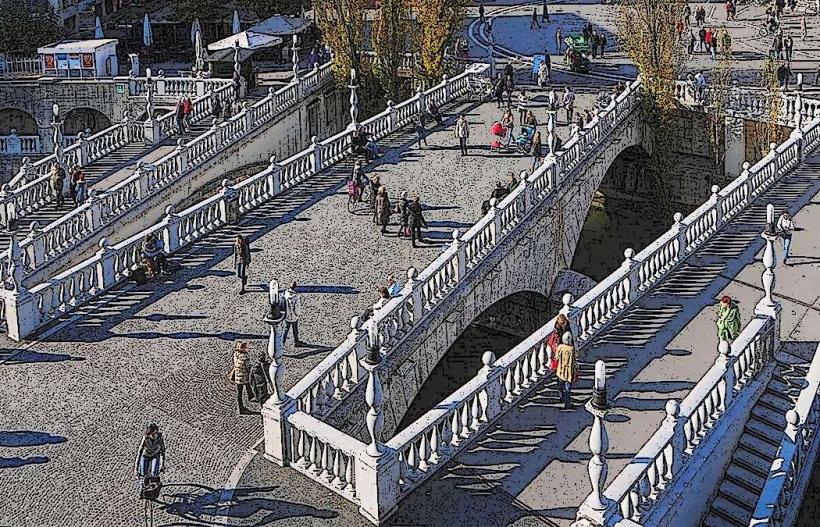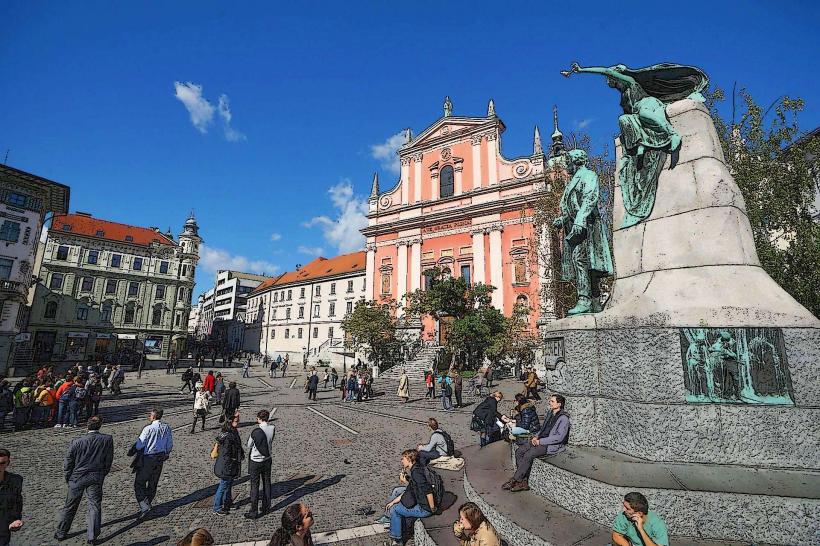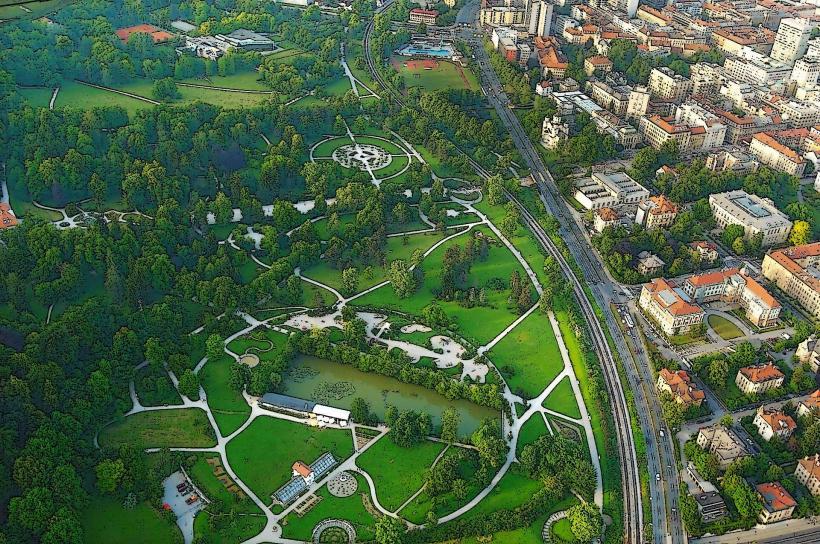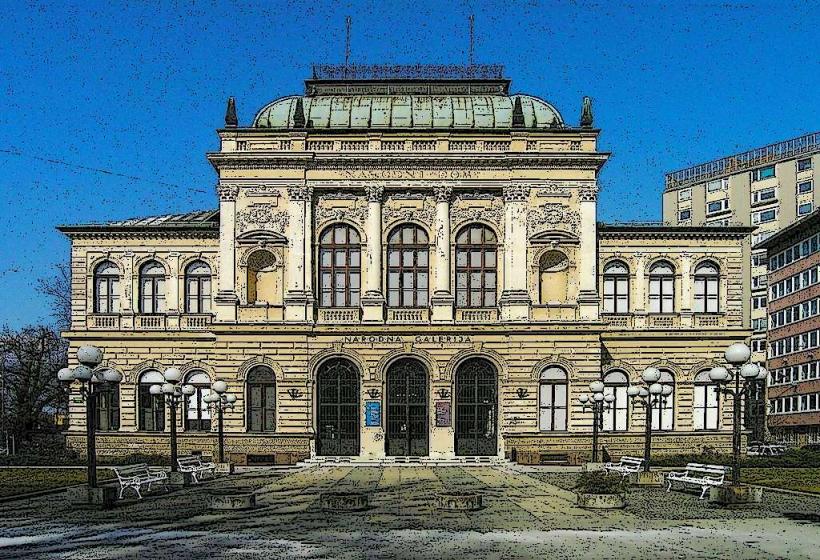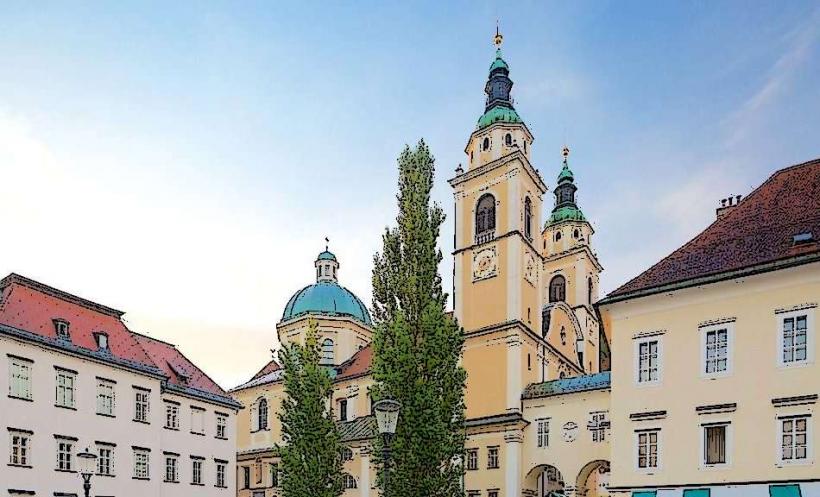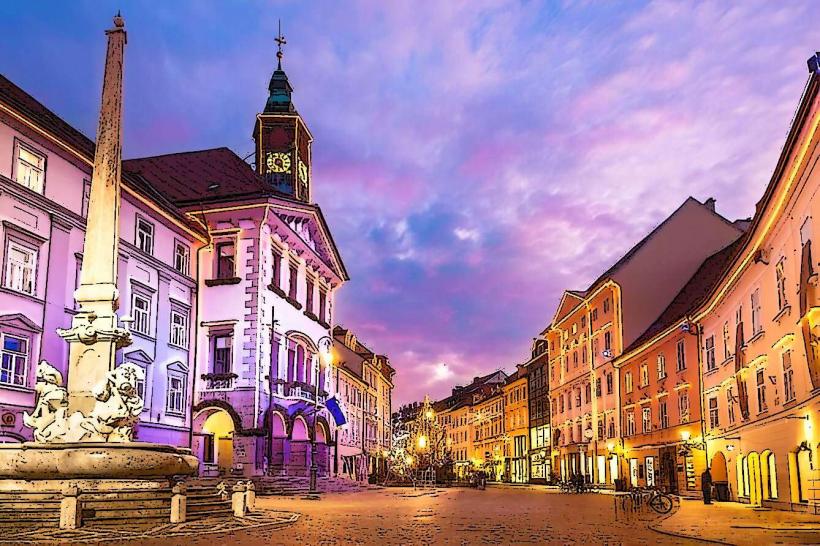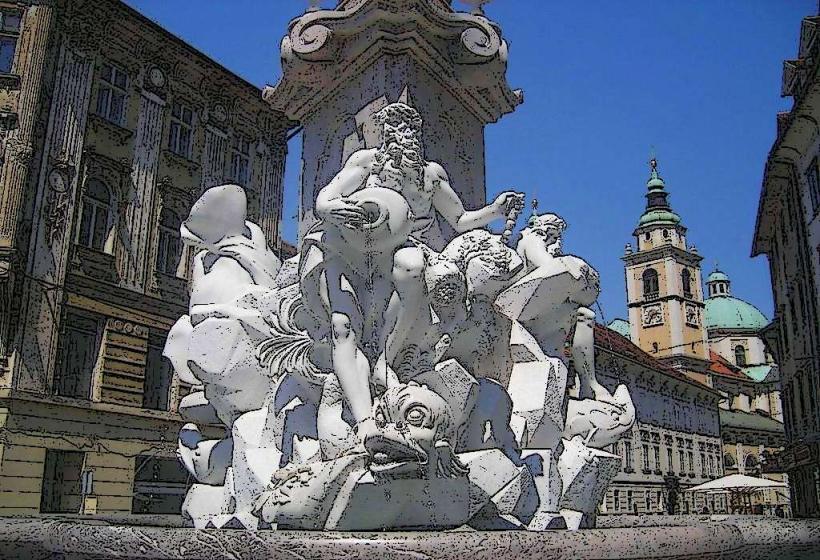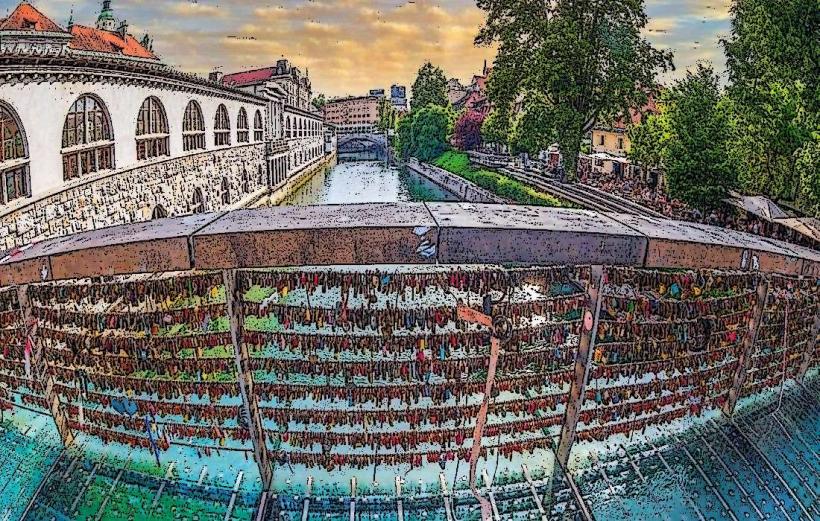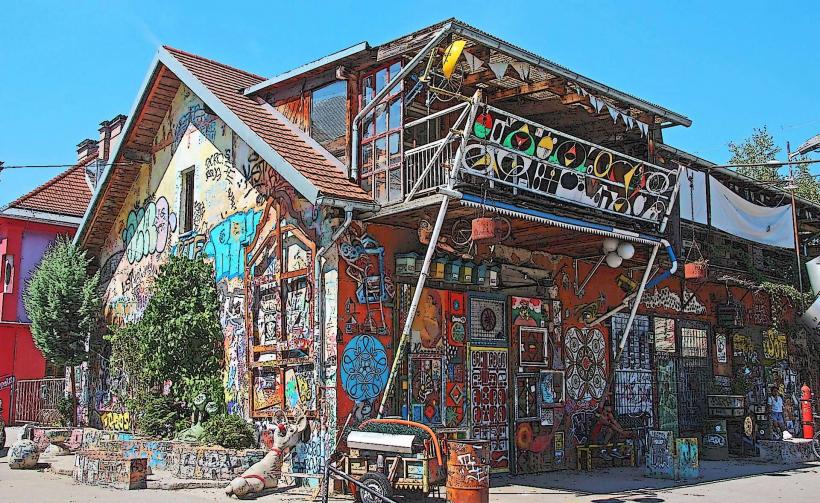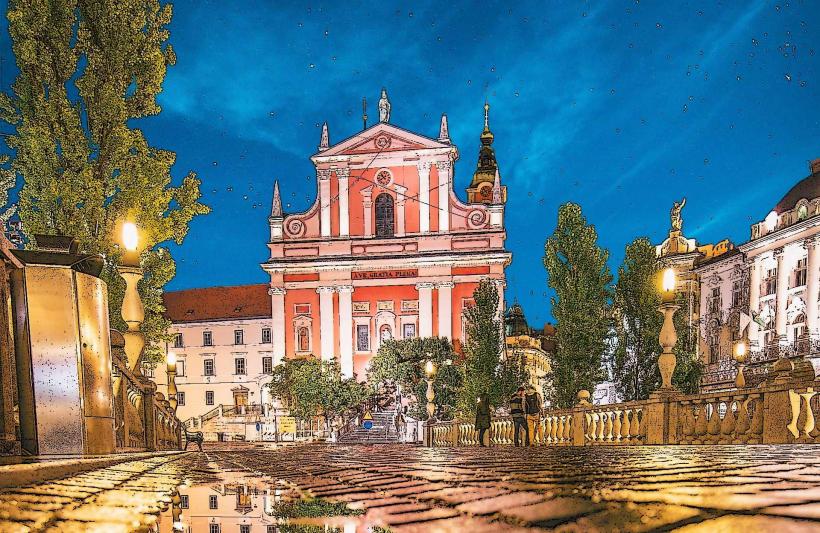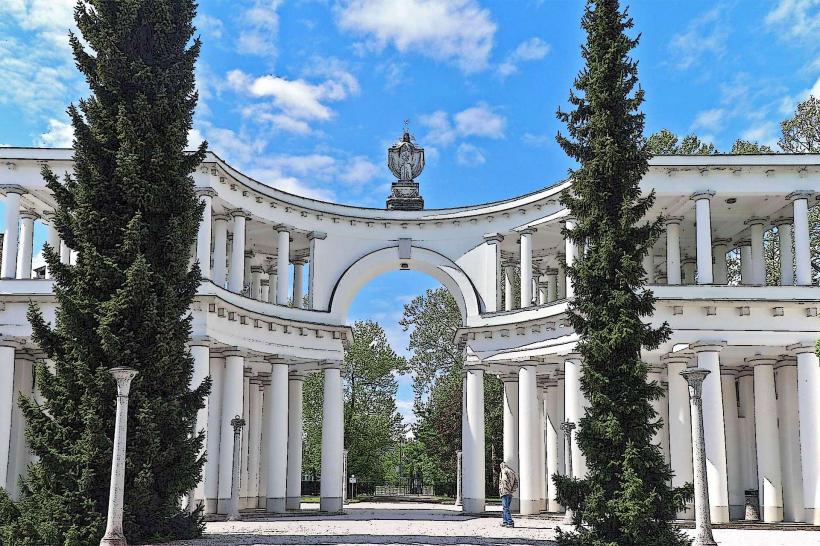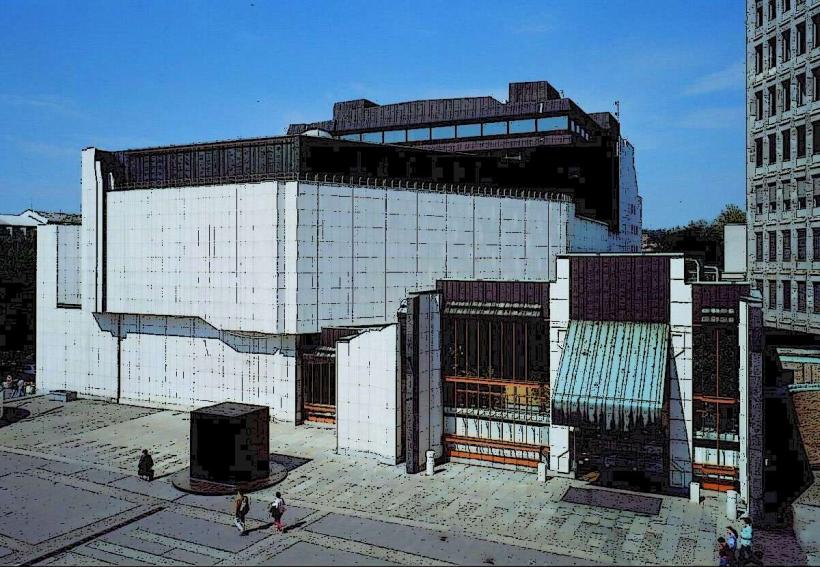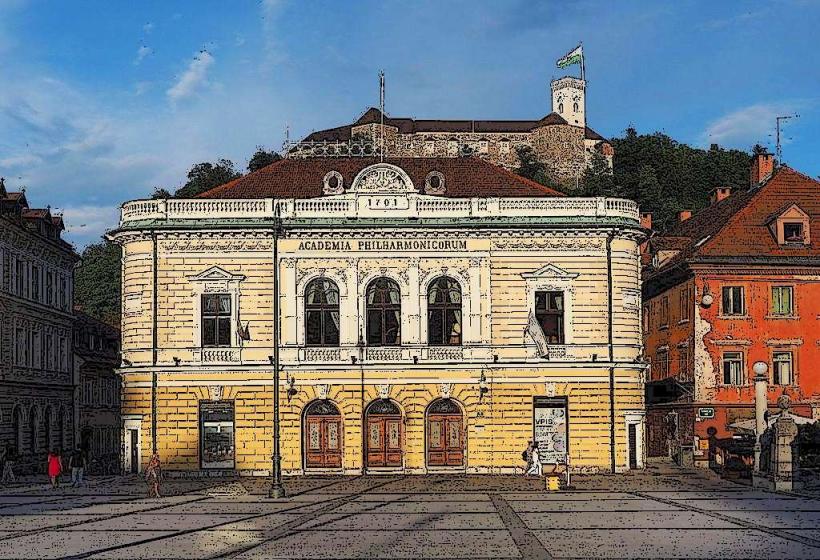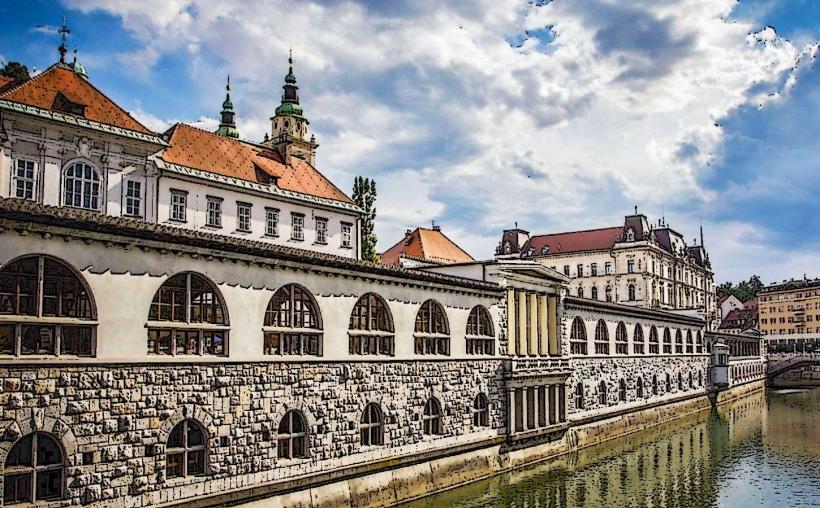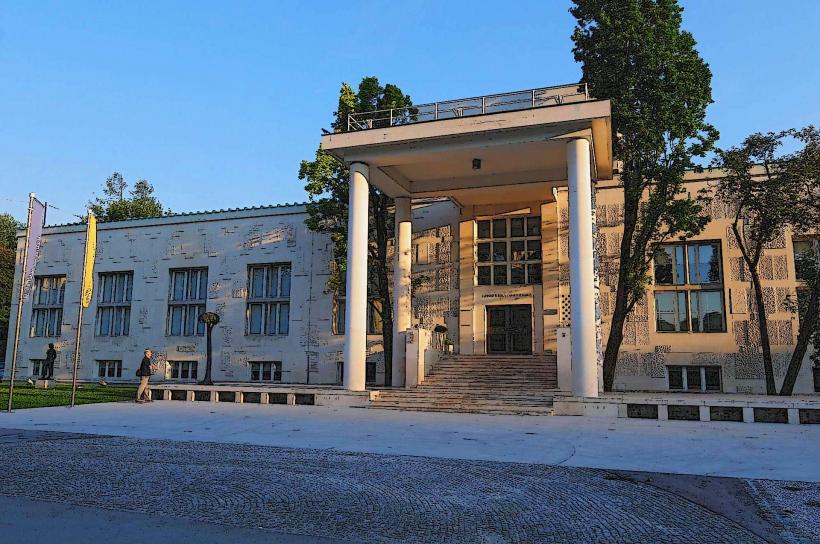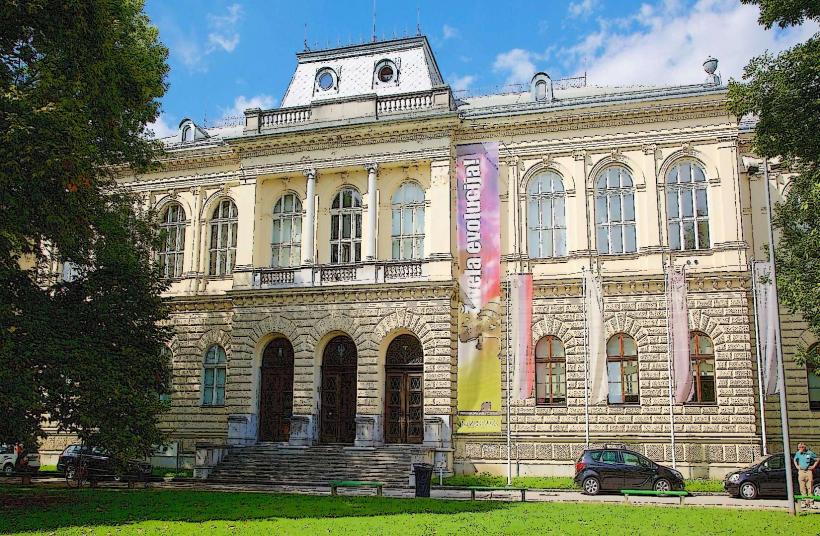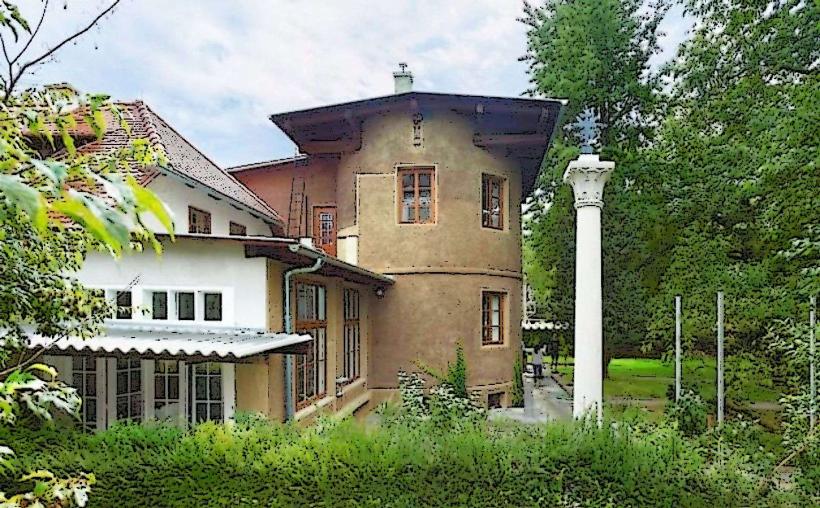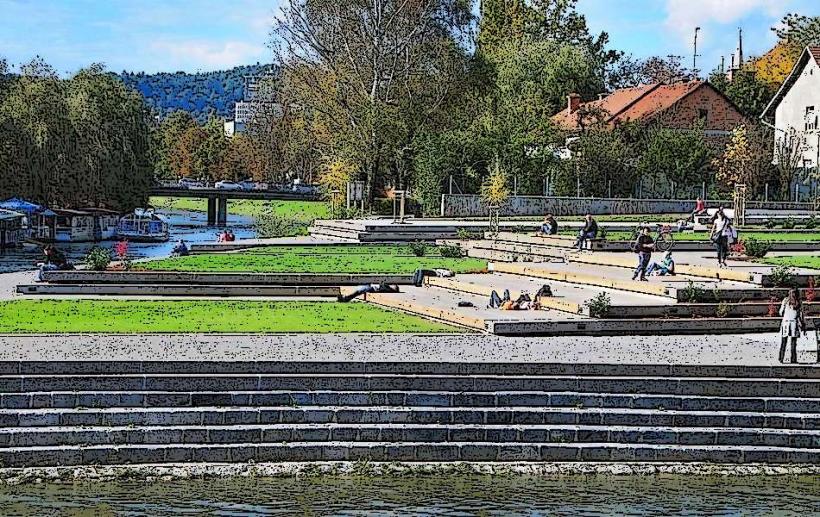Information
Landmark: Dragon BridgeCity: Ljubljana
Country: Slovenia
Continent: Europe
Dragon Bridge (Zmajski Most) is one of Ljubljana’s most iconic landmarks, renowned for its unique Art Nouveau design and its association with the legend of the dragon. It is a must-see when visiting Ljubljana, symbolizing the city and its rich history.
General Overview
- Location: Dragon Bridge is situated in the heart of Ljubljana, crossing the Ljubljanica River. It connects the Center of Ljubljana with the Trnovo district, one of the city’s oldest residential areas.
- Construction: The bridge was completed in 1900, making it one of the earliest examples of reinforced concrete bridge construction in the world.
- Dimensions: The bridge is 42 meters (138 feet) long and 12 meters (39 feet) wide, providing both vehicle and pedestrian access.
Historical Background
The Dragon Bridge was built during a time of great urban transformation in Ljubljana. The city was undergoing significant modernization at the turn of the 20th century, and the bridge was part of an effort to improve the city's infrastructure.
Architects: The bridge was designed by Jurij Zaninović, an architect from Ljubljana. It was built as part of the city’s initiative to widen and modernize the streets along the Ljubljanica River.
Engineer: The reinforced concrete structure was engineered by Česlov Zupančič, one of the leading experts in concrete construction at the time.
Design and Features
The bridge is a striking example of Art Nouveau style, and its design has become a symbol of Ljubljana.
Dragon Sculptures
The most distinctive feature of the Dragon Bridge is its four bronze dragon statues, one placed at each corner of the bridge. These dragons are one of the main symbols of Ljubljana, representing power, strength, and the city's legendary past.
According to Slovenian folklore, Jason, the ancient Greek hero, passed through Ljubljana with his Argonauts, and after slaying a dragon that terrorized the area, the dragon became a symbol of the city.
The dragons are life-sized and have a vibrant greenish hue, thanks to the patina developed over time. They are often a source of fascination for visitors and photographers.
Art Nouveau Style
- The bridge is decorated with Art Nouveau elements, which were popular in the early 20th century. The ornate lamps on the bridge are designed in this style, adding to its aesthetic appeal.
- The railings are also adorned with floral and geometric patterns, typical of Art Nouveau.
Reinforced Concrete Structure
- At the time of its construction, the Dragon Bridge was a groundbreaking feat of engineering due to its reinforced concrete structure. It was one of the first bridges in the world to be built using this method, showcasing the advances in engineering and construction during the industrial revolution.
- The bridge has stood the test of time and remains one of the most durable structures in Ljubljana.
Symbolism
The dragon is deeply ingrained in Ljubljana’s identity, with the Dragon Bridge serving as a visible reminder of the city’s mythological and historical heritage. The dragon itself is a powerful symbol in Slovenian folklore and represents a part of the country’s rich cultural narrative.
Legend of the Dragon: The dragon’s association with the city comes from the myth of Jason and the Argonauts. According to the legend, Jason and his men, while traveling through the area, encountered a fierce dragon guarding a lake (the area of modern-day Ljubljana). Jason fought and killed the dragon, and since then, the dragon has been a symbol of bravery and strength, as well as Ljubljana’s historic connection to mythological and ancient tales.
Role in Modern Ljubljana
Tourism: The Dragon Bridge is one of the most popular tourist attractions in Ljubljana. It not only draws visitors for its historical significance and architectural beauty but also serves as a prominent landmark in the city’s modern landscape.
City Landmark: The bridge is frequently featured in photos and postcards of the city and is a central part of Ljubljana’s identity. It also plays a role in the city’s marketing, making it synonymous with the Ljubljana brand.
Symbol of Strength and Protection: Today, the dragons are seen as guardians of the city, watching over the flow of traffic and pedestrians. The bridge serves as a link between the old town and the newer areas of the city, symbolizing the city’s historical and modern sides.
Accessibility and Visitor Information
Pedestrian Access: Dragon Bridge is open to both vehicular traffic and pedestrians. Visitors can easily cross the bridge on foot and enjoy the view of the river and the surrounding cityscape.
Surroundings: The bridge is surrounded by a number of interesting locations:
- Prešeren Square: A major city square located just a short distance from the Dragon Bridge, featuring prominent landmarks such as Franciscan Church and Prešeren Monument.
- Ljubljanica River: Visitors can also enjoy scenic walks along the riverbanks, with cafés and restaurants lining the waterfront.
Photo Opportunities: The bridge is a favorite spot for photography, particularly for those interested in capturing the distinctive dragons and cityscape of Ljubljana.
Conclusion
Dragon Bridge is one of Ljubljana’s most famous and historically significant landmarks. Combining engineering innovation, Art Nouveau design, and mythological symbolism, the bridge represents the city’s rich cultural heritage and its connection to Slovenian folklore. Whether you are walking across it, admiring the statues of the dragons, or simply taking in the views, Dragon Bridge offers visitors a glimpse into Ljubljana’s history, its artistic beauty, and its timeless charm.

